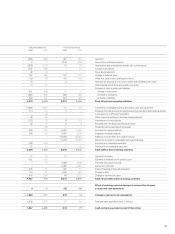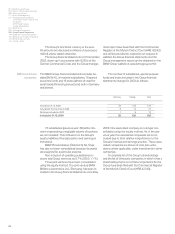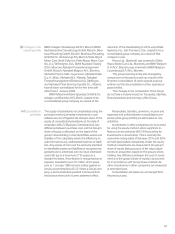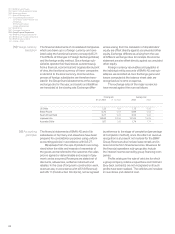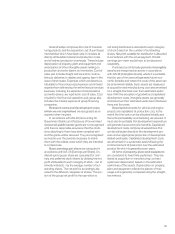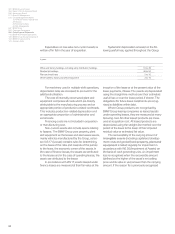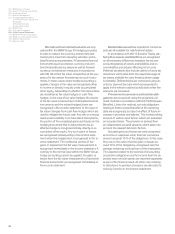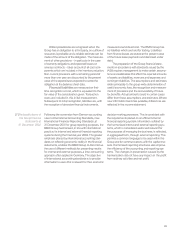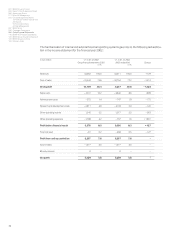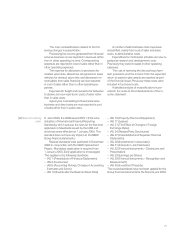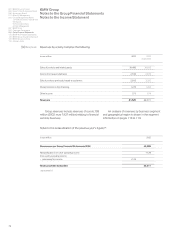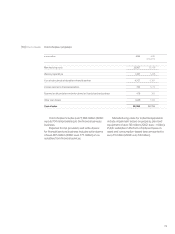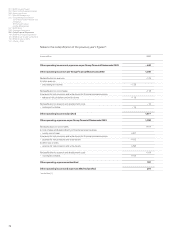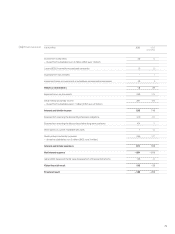BMW 2003 Annual Report Download - page 70
Download and view the complete annual report
Please find page 70 of the 2003 BMW annual report below. You can navigate through the pages in the report by either clicking on the pages listed below, or by using the keyword search tool below to find specific information within the annual report.69
Other provisions are recognised when the
Group has an obligation to a third party, an outflow of
resources is probable and a reliable estimate can be
made of the amount of the obligation. The measure-
ment of other provisions – in particular in the case
of warranty obligations and expected losses on
onerous contracts – takes account of all cost
com-
ponents which are included in the inventory valuation.
Non-current provisions with a remaining period of
more than one year are discounted to the present
value of the expenditures expected to settle the
obligation at the balance sheet date.
Financial liabilities are measured on first-
time recognition at cost, which is equivalent to the
fair value of the consideration given. Transaction
costs are included in this initial measurement.
Subsequent to initial recognition, liabilities are, with
the exception of derivative financial instruments,
measured at amortised cost. The BMW Group has
no liabilities which are held for trading. Liabilities
from finance leases are stated at the present value
of the future lease payments and disclosed under
debt.
The preparation of the Group financial state-
ments in accordance with standards issued by the
IASB requires management to make certain
assump-
tions and estimates that affect the reported amounts
of assets and liabilities, revenues and expenses and
contingent liabilities.The assumptions and estimates
relate principally to the group-wide determination of
useful economic lives, the recognition and measure-
ment of provisions and the recoverability of future
tax benefits. Actual amounts could in certain cases
differ from those assumptions and estimates. Where
new information becomes available, differences are
reflected in the income statement.
[7]Reclassifications of
the Group financial
statements at
31 December 2002
Following the conversion from German accounting
rules to International Accounting Standards, now
International Financial Reporting Standards, at
31 December 2001for group reporting purposes, the
BMW Group harmonised, in line with international
practice, its internal and external financial reporting
systems during the financial year 2003.The greater
emphasis placed by international accounting stan-
dards on reflecting economic reality in the financial
statements, enables the BMW Group to discontinue
the use of different methods for presenting results
for internal and external purposes, a time-consuming
approach often applied in Germany. The objective
of international accounting standards is to provide
information to users that is relevant for their economic
decision-making
processes. This is consistent with
the requirements placed on an efficient internal
financial reporting system. Information collated by
the harmonised internal and external reporting sys-
tems, which is considered useful and relevant for
the purposes of managing the business, is reflected,
in aggregated form, through external reporting. This
permits a common language to be used within the
Group and for communications with the capital mar-
kets. Harmonised reporting structures also improve
the efficiency of the accounting and reporting sys-
tems. The changes in presentation caused by the
harmonisation did not have any impact on the profit
from ordinary activities and net profit.


